the PartnerShip Connection blog
the PartnerShip Connection blog
the PartnerShip Connection blog
the PartnerShip Connection blog
the PartnerShip Connection blog
-
Parcel vs Freight: What Works Best for You?
06/16/2025 — Jen Deming
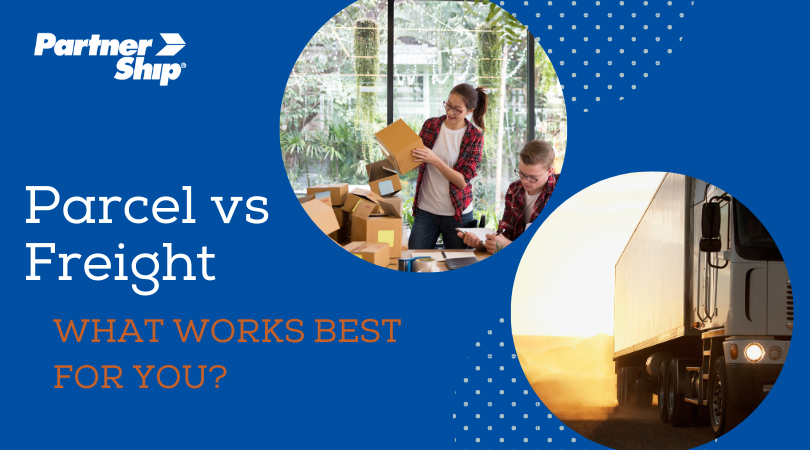
The differences between parcel shipping and less-than-truckload (LTL) freight shipping can be difficult to identify, at least on the surface. If you're not using either service regularly, it can be challenging to know which shipping option you really need. But, there are some definite factors that make a difference to a shipper's experience, like transit times, pricing structure, and security risk. Knowing more about the key differences of parcel vs freight shipping can help determine which makes the most sense for your shipment.
Risk and security
Packaging and handling practices can vary between parcel vs freight shipping, affecting your freight's risk of damage. Typically, parcel shipments are smaller, individually boxed shipments that move separately within the carrier system. Most are under 70 lbs., but they are accepted up to 150 lbs. Freight loads are larger and most often consist of multiple boxes or items collected onto a pallet, or within strapped-together crates, and ship together as a group. Both types of shipments have packaging requirements that include protective material inside the container to help prevent damage. Because freight shipments often use shrink wrap or other binding material to keep boxes together, loss is minimized.
Because of their smaller size, parcel shipments can be easily handled and are generally auto-sorted through the carrier conveyor system. They are then taken to a regional location and transferred through multiple stops and service terminals until final delivery. Because of all the handling, combined with the smaller size of loose parcels, there is an increased risk for lost or misrouted boxes. Freight shipping also includes loading and transfer at multiple stops, but it's less frequent than parcel services. Fewer stops means less loading, but because the pallets may need to be moved with a forklift, there is a risk of damage associated with handling that shippers must keep in mind.
Driver service level
A key point to keep in mind when considering parcel vs freight shipping is the truck driver's level of involvement when it comes to handling the shipment. Parcel shipments moved by common carriers such as FedEx or UPS are loaded, unloaded, and delivered by hand. A shipper is responsible for proper packaging and labeling, and a receiver must check the shipment carton count and for damages. But generally, a driver will take care of handling, including front door pick-up or inside delivery.
Freight shipping is an entirely different story. The driver only moves your freight from pick-up to destination; it is up to the shipper and consignee to have a team ready for the loading and unloading of the freight. This means the driver will not assist. Driver assistance can be requested, but because it is considered a special service, expect to pay extra. Additionally, accessorials such as inside delivery or limited access locations may incur other fees on top of regular shipping charges.
Pricing and cost efficiency
One of the most significant differences in parcel vs freight shipping relates to how pricing is calculated. Freight pricing is determined by several variables, including distance traveled, fuel cost, weight, additional services, and the classification of the shipment. Lane pricing is set by carriers and certain routes across the country can be more competitively priced than others depending on the volume of industry or location type. For example, shipping off-mainland or to a densely congested city's downtown area can be pricey. Depending on your product type, or the density of your shipment, the freight class can either increase or decrease. Lastly, carriers tend to have different levels of liability coverage, depending on freight class, in the event of damage claims on a shipment. Freight class is an extremely important factor for freight shippers as it pertains to cost.
Parcel pricing can also be complicated. The shape, weight, and size of a package all affect the cost, in addition to the type of service requested. Shorter, expedited transit times cost more than standard ground shipping options. Additionally, dimensional (DIM) weight pricing has become popular with common carriers. Dimensional weight bases price on the package volume in relation to its actual weight. The practice was implemented in an effort to minimize awkwardly-sized shipments that waste space in a carrier's truck. It's important to properly calculate your dimensional weight so that you can accurately predict the cost of your shipment.
Knowing the differences of parcel vs freight shipping can help you make the right choice in service and save you in shipping costs. If you're shipping larger, heavier items, or can combine multiple shipments into a single load, using an LTL freight service is right for you. If you're shipping smaller, single boxes and want faster door to door service, parcel shipping is the better option.
Understanding how pricing is calculated for both, and what you can expect your shipment to encounter during transit, will help you ship smarter. If you're still unsure which would make the most sense for your business, call 800-599-2902 or contact us today.

Click to read more... -
How to Save on Shipping While Reducing Packaging Waste
04/20/2025 — Jen Deming
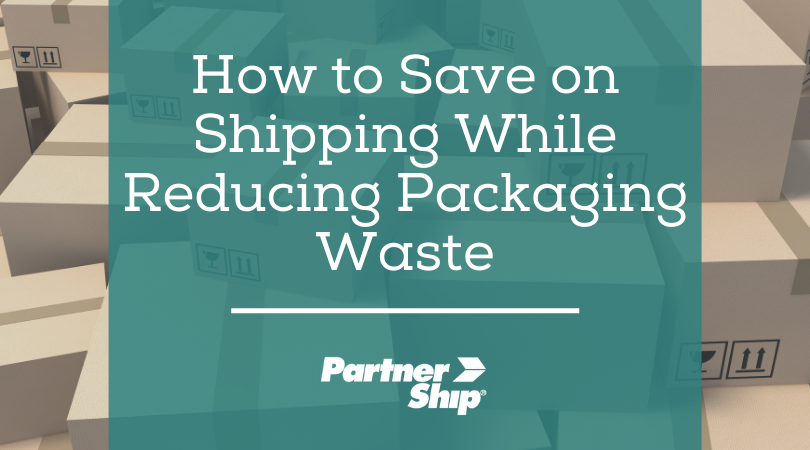
We love shopping online. Nothing beats the convenience of delivery, variety of product options, and satisfaction of adding things to a virtual cart and clicking ‘buy now’. Unfortunately, the perks of ecommerce do have a flipside - the environmental impact of shipment packaging waste. Ecommerce shipping actually has about four times as many touch-points as regular retail. This means more packing and unpacking individual orders to customers – leading to even more packaging waste. Savvy e-retailers are minimizing their environmental impact by using eco-friendly shipping tactics and by using less wasteful packaging procedures. Even better, reducing your shipment packaging waste is a sustainable practice that is both eco-friendly and a smart way to lower shipping costs, through these three easy tips.
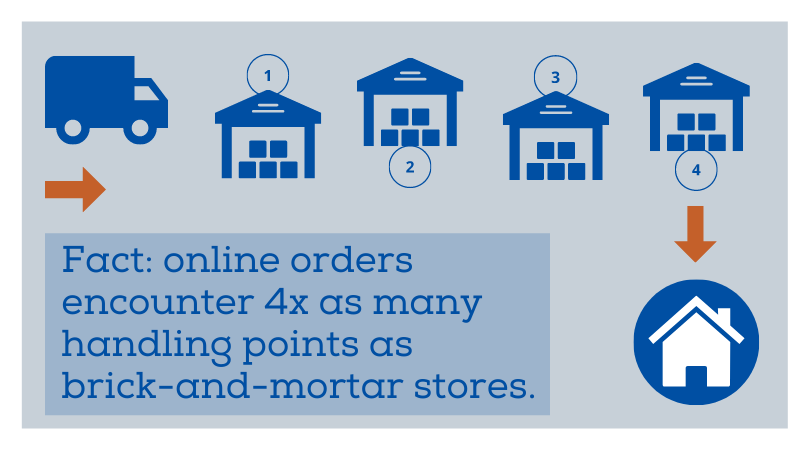 Tip 1: Reduce the amount of your packaging
Tip 1: Reduce the amount of your packaging If you’re a shrewd retailer, you know that your choice of packaging can protect your product, prevent damage, and enhance the value of your brand through the unboxing experience. But not every product ordered online needs to be shipped within layer upon layer of branded boxes and plastic packaging. Taking a “less is more” approach can help balance both cost and structural integrity, in addition to lowering packaging waste.
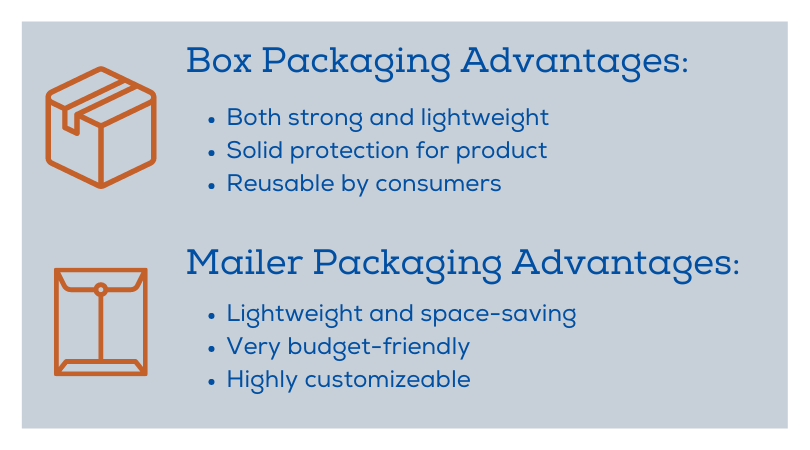
When you’re considering what types of shipment packaging to use, retailers have a ton of options. Packaging materials include paper, plastic, or chipboard boxes, foil or poly envelopes, bubble mailers, jute, vinyl, or cotton bags, and many other options. Dunnage, or the internal “protective” material inside the shipment can be Styrofoam, cardboard, kraft paper, soft or rigid plastics, and bubble wrap. Each option has its own cost, key benefit, and impact on the environment. Research what types of shipment packaging make the most sense to adequately protect your product, and then eliminate the use of unnecessary extra materials. Always keep in mind that you can reduce your initial cost and environmental impact by choosing simple, but effective shipment packaging that makes sense for your product and consumer.
Tip 2: Reduce the weight and dimensions of your shipment
It’s clear that wasteful packaging procedures can drive up initial costs, but keep in mind that any unnecessary materials can also affect your shipment rates due to weight and density. Your parcel rate is determined in large part by region, distance traveled, and weight. Heavy shipments put more strain on trucks and utilize more fuel when hauling loads. As a result, carriers will charge you more for added weight.
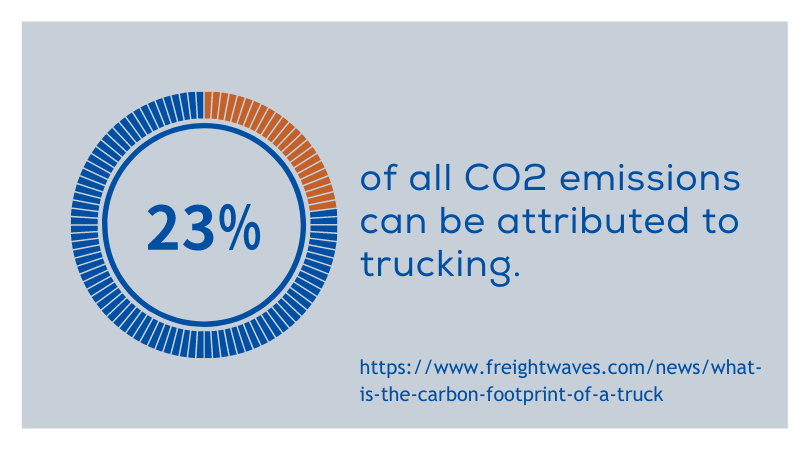
Another factor that can affect your shipment cost is dimensional weight. DIM weight pricing is used by carriers to offset the cost of moving large and bulky shipments in their network. This pricing strategy focuses not just on the actual weight, but also the amount of space your shipment takes up. Your DIM weight is determined by the dimensions of your shipment. If the calculated DIM weight is higher than the actual weight, your shipment will be rated on that.
Elaborate packaging with multiple components inside runs the risk of wasted interior space, so making sure that you right-size your package is important. Ensure that there is no empty space within your shipping box after the product and protective materials are added in. Reducing wasted space within your shipment can lower your final bill, and greatly reduces packaging waste that can be harmful to the environment.
Tip 3: Encourage your customer to use your packaging for returns
With more people preferring to shop online, the need for convenient returns options increases. Being intentional in how you approach your returns can help lower reverse logistics costs while remaining environmentally conscious.
Every online shopper knows that preparing to ship a return can be a pain. No one loves rummaging through a garage of broken-down boxes hoping to find one adequate for use. It’s not as simple as grabbing an empty box - the package must be structurally sound and free of pre-existing labels to avoid hiccups on the road.
Do your customers (and yourself) a favor, and make this process even easier by utilizing return-ready packaging for your orders, including resealable boxes, envelopes, and mailers. Include pre-printed shipping labels with return addresses and packing slips to help make the process even simpler. By providing return-ready packaging, you’re ensuring that the package is right-sized for pre-paid shipping labels and services. As a retailer, you’re taking steps to avoid possible damages or loss by providing packaging options that securely protect your product while in transit.
In short, by providing return-ready packaging, you’re taking back control of return shipments by managing several variables that may lead to costly surprises and packaging waste.
Reducing packaging waste benefits everyone
Retailers have a unique opportunity to improve the eco-footprint left by their businesses. Environmentally friendly shipping practices can help lower emissions on the road, reduce packaging waste headed for landfills, and lower costs. To further improve your environmental impact, consider working with a sustainably minded shipping provider, like PartnerShip. We elect to work with carriers that prioritize energy efficiency in trucks and facilities, minimize air-pollution, and offer transparency through data about fuel usage and impact.
Click to read more... -
Forget Boxes: When to Use Poly Mailer Packaging
04/05/2023 — Jen Deming

If you’re a retailer, you probably know that there is a wide variety of packaging options available to ship your customer orders. In addition to traditional options like boxes, poly mailers are quickly becoming the preferred choice of many shippers. With perks like low supply costs and quick assembly, poly mailers sound like a rock star solution, but how can you be sure they are right for you? Looking at some very specific scenarios can help determine when to use a poly mailer.
Scenario 1 - When you need assembly to be fast and efficient
No one wants to waste time packaging shipments - and poly mailers are a great option when you want to streamline your shipping process. Unlike boxes, which require assembly, tape, and internal elements like foam core, poly mailers are ready to use right off the shelf. Once you select which mailer style to use, all you need to do is insert the item, seal the mailer, and add the shipping label.
An added bonus is that poly mailers can streamline and simplify storage for your packing materials. They take up less space, which means you can store more of them in your warehouse. If you have limited storage space, and a smaller team to manage your shipping, these efficiencies can be a lifesaver.
Scenario 2 - When you want to keep shipping supplies costs low
Keeping shipping supplies on hand can get pricey, especially if you need to order custom-sized items like boxes for packaging. If you’re looking to save money on supplies, poly mailers are a great option. They are typically less expensive than boxes - on average they cost $0.25 a mailer compared to $1.25 for a box of a similar size. For extra protection, you can find bubble mailers, which have padding built in. Bubble mailers don't require additional packing materials like Styrofoam peanuts, so you're saving some money there. All types of mailers are able to be purchased in bulk, which helps with cost savings.
Another perk you get with poly mailers is that if your supplies unexpectedly run low they are easy to find at places like office supply or grocery stores. While it’s always best to keep an appropriate amount of packaging on hand, if you’re in a pinch, finding more won’t be difficult or break the bank. These factors all add up to significant savings over time, especially if you ship a moderate to high volume of products.
Scenario 3 - If you want to avoid high DIM weight charges
As many retailers know, small package carriers use dimensional weight (DIM weight) pricing to calculate shipping costs. Carriers do not like to waste space on their trucks, so shipping large, lightweight packages is a no-no. These bulky packages will cost you, and this is a significant expense that quickly adds up for many retailers. A smart way to offset these high costs is to make sure you are minimizing wasted space, and that’s where poly mailers come in.
Poly mailers are small, thin, and flexible - they can be folded and resized to best fit the product inside. These small, dense packages allow for greater efficiency for the carrier, and will cost you less in the long run.
Scenario 4 - When you want a specific type of protection
Poly mailers are economical and convenient, but they are not suitable for all types of products. If you’re shipping fragile items, or those too large and heavy to fit securely in a mailer, you may need to use a different type of packaging.
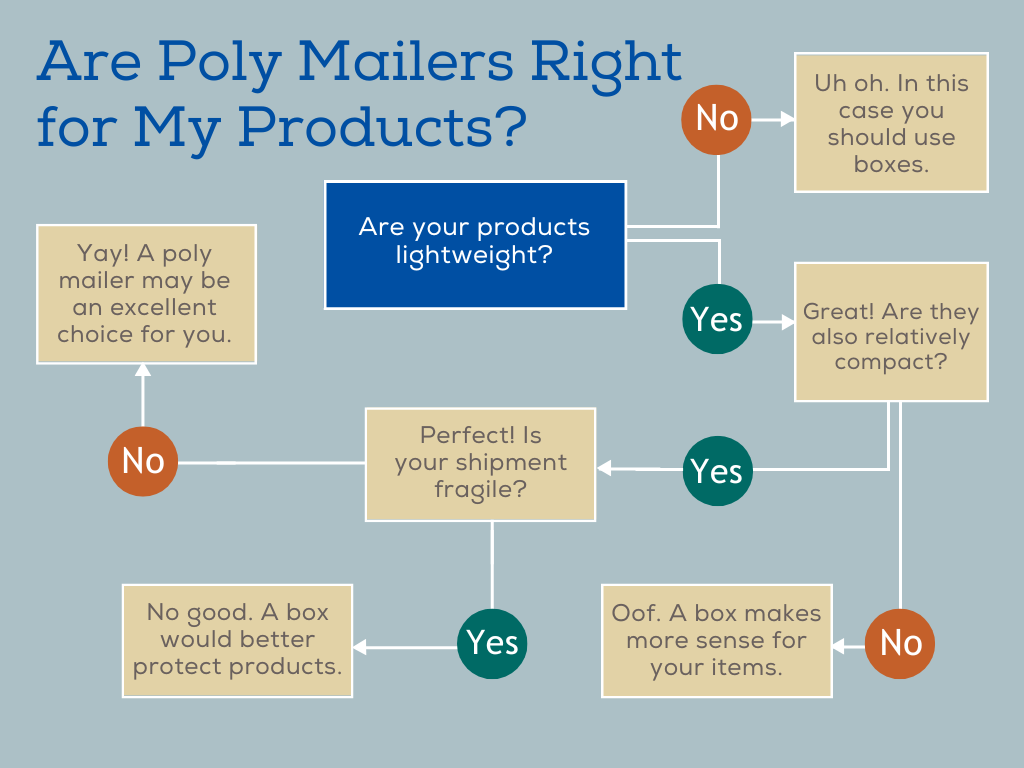
Poly mailers are ideal for soft goods like clothing, bedding, purses and backpacks, and some accessories like belts or scarves and knit hats. Padded mailers that offer additional lightweight protection are great for books and printed materials, DVD and blu ray discs, some jewelry, cosmetics and skincare items, and select types of home goods like flatware.
If you’re shipping the right items that are not easily damaged, poly mailers can offer excellent protection. They are made from durable materials that can withstand normal handling during shipping. They are tear resistant, and also offer dirt and weather protection that is ideal for small items going to residential mailboxes.
Scenario 5 - When eco-friendly shipping is important
Finally, if you’re committed to eco-friendly shipping practices, poly mailers can be a great option for your business. They are often made from fully compostable or recyclable materials. You can often drop off poly mailers at the same places that would recycle plastic bags and containers. Poly mailers are also generally lightweight compared to boxes, which is more energy efficient for carriers.
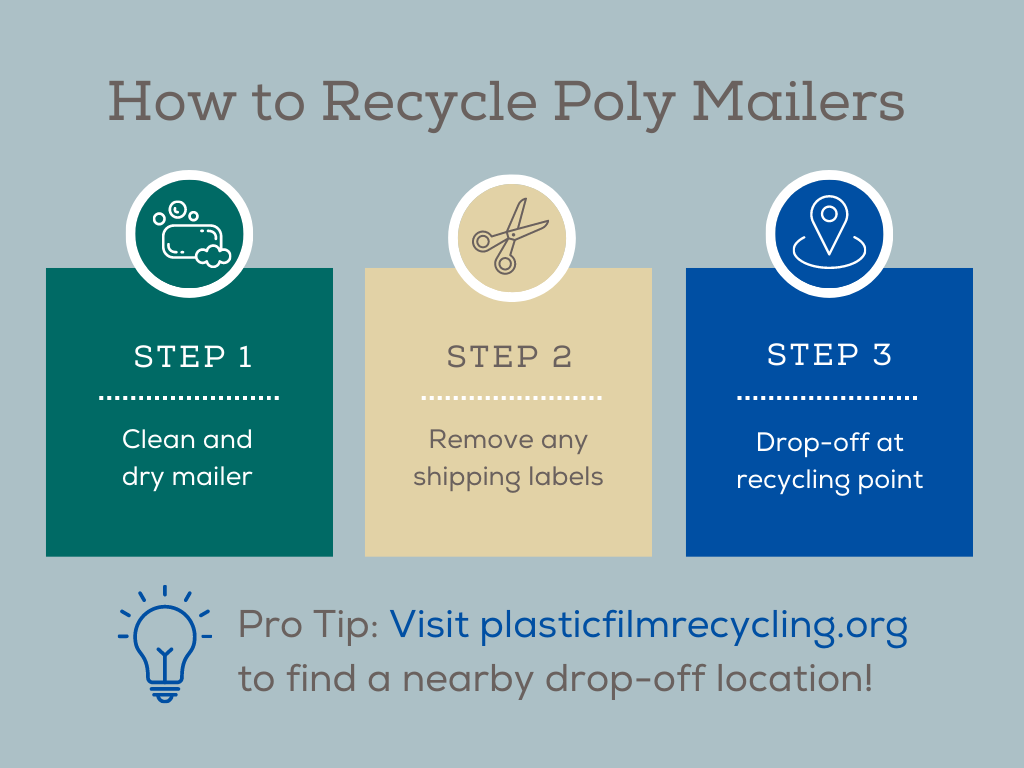
Most significantly, poly mailers are often completely reusable. Many options have a secondary adhesive strip that allows them to be used for return shipping of orders, or even reused by the consumer for other shipping purposes. Even those without a second strip can be folded over at the opening and secured with tape - their durable material can withstand multiple journeys through a shipping network. These factors combined make poly mailers a great choice for retailers who want to reduce their environmental impact by reducing packaging waste.
Poly mailers are a great option for retailers - when it’s the right product
Poly mailers are a versatile and cost-effective option for small package shipping, and work very well for many ecommerce retailers. They can help streamline your order fulfillment process, enforce brand awareness, and help avoid high DIM weight costs. You may be able to save even more on your small package shipping if you belong to an association or chamber that works with PartnerShip. Contact our team to find out what options are available to your business.

Click to read more... -
If You're Shipping Clothes, Don't Sleep on These Pro Tips
02/20/2023 — Jen Deming
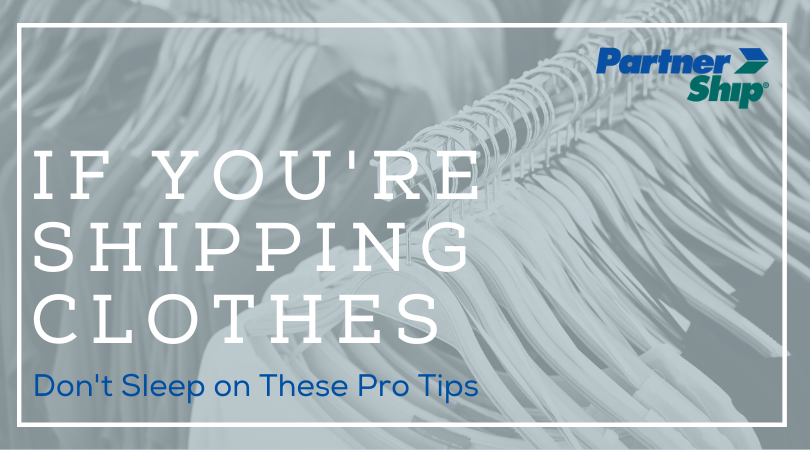
The online apparel industry is kind of a big deal. In fact, apparel and accessories accounted for 29.5% of all ecommerce sales in 2021 in the US alone. While shipping clothes seems pretty straightforward, you must master packaging, item weight, returns, and more to be successful. We’ve compiled the definitive list of unique tips for clothing retailers that will help ensure you’ll have the competitive edge.
Tip 1: Keep costs low with flexible packaging options
Apparel shippers have a unique advantage over other ecommerce retailers: more packaging flexibility. This ability to use a variety of different packaging types allows greater cost control. Malleable items like clothing are tougher to damage than rigid, breakable items such as home goods, for example. Because of this, many apparel retailers can ship in alternative packaging types like poly mailers, envelopes, or recyclable bags instead of boxes, which can cost less and also offer greater customization options.
Another unique advantage of clothing is that it can be adjusted within the package to avoid higher shipping charges due to dimensional (DIM) weight. Most lightweight items are at an increased risk, but pliable fabric items like clothing can be folded and fitted to reduce extra space more easily. Whatever you can do to avoid wasting space will help you out in the long run.
Tip 2: Use apparel’s high return rate to your advantage
Retail returns are a particularly impactful affliction when it comes to the apparel industry, especially with online shopping. In fact, 88% of customers have reported returning clothing in the past. Sizing, color, fit, pricing, or something as simple as buyer’s remorse may encourage a customer to return their product. The key to navigating returns starts with shifting your perspective on them in the first place. Returns actually give you an opportunity to further engage with customers, and can convert online-only shoppers into brick-and-mortar customers. Your customer may initially prefer the quick refund of an in-store return, but after checking out your products in person, they may be more likely to exchange or accept a store credit for later use.
Shifting your attitude away from returns as a necessary evil to a more impactful part of your business strategy as a growth driver is essential. When used correctly, returns can actually result in higher net sales from your most profitable customers. Receiving excellent customer service during a return will increase confidence in a brand. Helpful measures such as adding return packaging and instructions, or sending follow-up emails to assess the buying experience, can strengthen the customer relationship and keep them coming back for more.
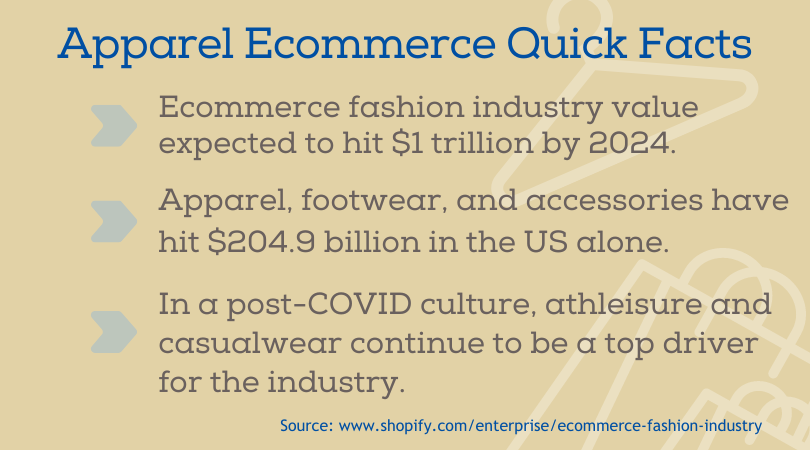
Tip 3: Offer free shipping more successfully with scalable threshold strategies
With free shipping as a major expectation amongst consumers, ecommerce retailers can struggle with how to implement a strategy that is viable. Apparel retailers have it a bit easier than other shippers, due to the variety of options available. Implementing free shipping by using a threshold (“minimum order”) strategy often is the easiest way to give customers what they want while remaining a profitable business.
First, you must figure out what your minimum threshold should be by looking at gross profit margin and average shipping costs. After you come up with that figure, consider offering the following value-centric options so that it’s easier to hit a specific order amount:
- Product bundles - consider bundling options of most commonly-purchased items that customers go for in multiples, and pricing the bundle at your threshold. Example: 6 pairs of socks for $25
- BOGO offers - offer BOGO deals that will get your average order value up and hit the minimum. Example: buy a pair of jeans for $40, get the second pair half off to hit a threshold of $60
- “Shop this outfit” - spotlight entire outfits, from basics to accessories. Make the price of each item clear, and display in virtual showrooms grouped by theme, like a season or occasion. Customers love to visualize how to put pieces together, and clearly breaking down the price for each item will help customers do the mental math to get to that threshold.
If you do offer free shipping, you cannot over-communicate the minimum order amount. It’s important that the shopper knows how much they must spend during every step of the order process. That way, they don’t reach the checkout and abandon their cart due to shipping frustrations.
Tip 4: Take advantage of shipping discounts exclusive to clothing retailers
No matter what industry you’re in, you should be aiming to keep your shipping costs low. Optimizing your packaging, ensuring you have accurate shipping details, and leveraging returns can all help, but checking into discounts is always smart.
Some carriers may offer limited-time promotional pricing or volume-based discounts, but your business needs reliable discounts that don’t have an expiration date. Many association groups and trade organizations within the retail industry offer shipping discounts as a member benefit. PartnerShip works with over 130 groups to provide members discounts that can offset daily shipping costs. Contact our team to see what’s available to you.

Click to read more... -
Why Offering Free Shipping for Your Business is Easier Than You Think
12/13/2022 — Jen Deming
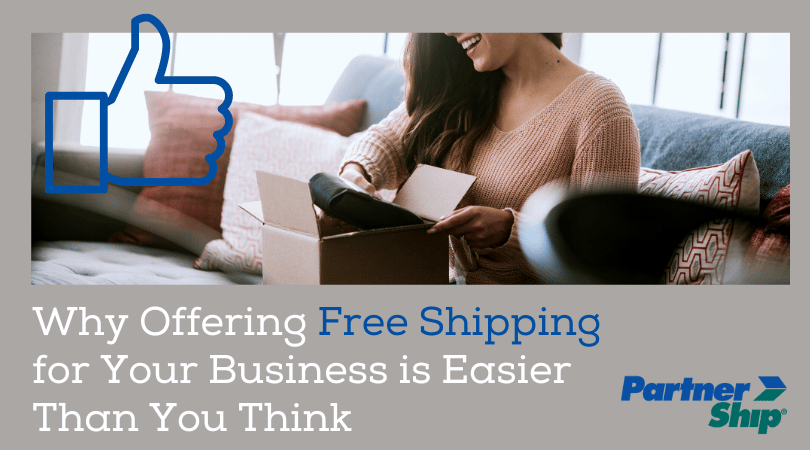
As a consumer, the words “free shipping” can create a huge incentive that pushes you to purchase. The expectation for most shoppers is that there will be some sort of free option. However, many retailers are still hesitant to offer free shipping, or stuck on how to make the choice available to consumers while still protecting their bottom line. Let’s take a look at the three most common misconceptions about offering free shipping, and how you can implement strategies to make it work to your business’s advantage.
Misconception #1 – Absorbing shipping costs will cut into my bottom line
If we’re really being honest here, it’s important to note that free shipping isn’t really “free”. Transportation services require time and effort from the carrier, so someone has to pay for it. If it’s not your customer, then it will have to be you. If not addressed correctly, you will have to absorb costs, and this will decrease your margins, overall.
The good news is that offering free shipping to your customer can have a major positive impact on your sales because it’s viewed as a huge value-add. In fact, most consumers are willing to spend up to 30% more online if they know they won’t be paying for shipping. As a top incentive, a further 93% of shoppers say they will take action to qualify for free shipping by adding more items to their order. By offering free shipping, you are going to boost sales and increase your average order spend. In time, the increase in revenue will ideally offset your shipping costs.
Pro tip: Set a minimum amount threshold to qualify for free shipping.
To make free shipping a viable strategy, it’s probably not smart to offer the service on just any order that is placed. Because shipping costs fluctuate, it can be hard to predict consistently. By setting a minimum order amount, you’ll help ensure that the revenue from the sale will offset the costs of transportation. Determine your minimum order value in advance, and be strategic about communicating that minimum amount during every step of checkout.
Misconception #2 – Building shipping cost into product price will scare customers
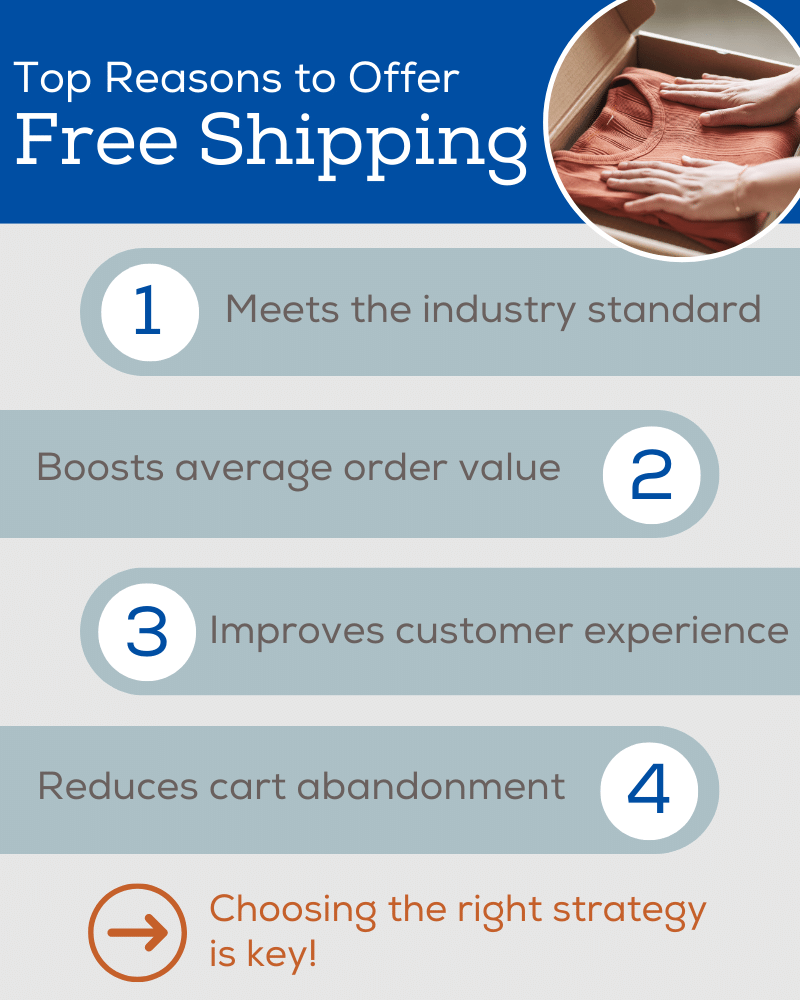
To counter the cost of shipping, it may make sense to increase your product price. But this can sound like a scary notion. Raised prices turn off customers and decreases your competitive advantage, right? The truth is, by increasing prices even minimally, while offering a high-value service like free shipping, you will see a boost to your net margin. 49% of all cart abandonment occurs due to sticker shock at the shipping point of checkout, not due to product price. Moderate price increases are generally justified by the customer, as long as fulfillment expectations are being met.
Pro tip: Product pricing should match what your customers are willing to spend and the type of customer you are trying to attract.
When building shipping costs into the price of your products, it’s always important to keep in mind who your target consumer base is. For example, a premium, brand-name shoe retailer can get away with a higher minimum price point than a book seller. Adding the cost of shipping into product price is a legitimate tactic that ensures you're covering your bases, just keep your price points fair and realistic.
Misconception #3 – The demand for free shipping isn’t there for my business
Unless you’ve been living under a rock, you know that free shipping has pretty much become the industry standard. Thanks to large ecommerce companies like Amazon, consumers expect shipping to be fast, free, or a combination of both. No matter whether you’re selling t-shirts or toolkits, the demand for free shipping is there for any industry. In fact, 66% of consumers want free shipping on all orders, regardless of the total, and 88% expect it when their order exceeds a certain amount. Even more alarming, 61% of shoppers say they are “somewhat likely” to cancel their order if free shipping isn’t offered – that’s a big old ‘yikes’. In short, when the majority of your consumer base expects some type of free shipping, it’s time to stop stalling and decide how to offer the service instead.
Pro tip: Explore ways to “test out” free shipping with offers and promotions.
You don’t have to jump right into a committed strategy right off the rip – dipping your toes in can help determine which tactics work best for you. Consider offering new customers, or rewarding existing ones, with a free shipping promotion. Implement VIP or loyalty programs that allow your customers to sign up and receive free shipping as an incentive. You may even benefit from offering free shipping on select items (perhaps those with a higher price point). By testing out different methods, you can really look at the shipping costs you incur, what your minimum order threshold should be, and refine your strategy from there.
Discounted shipping options help you and your customers
No matter which tactic you decide is best when offering free shipping to your customers, it’s extra important to keep your shipping costs low. You might not know that there are often shipping discounts available through memberships within trade associations, chambers, and industry groups. PartnerShip works with over 130 groups to provide their members with discounts on FedEx services. Contact our team to find out if you qualify.

Click to read more... -
Which Shipping Strategy is Right for Your Retail Business?
10/26/2022 — Jen Deming
Choosing the right shipping strategy can help increase profitability, conversion, and repeat business from your customers. But, how do you know which one is right for you? We take a look at the three most common small package shipping strategies for retailers, so you can decide what makes sense for your business.
Click to read more... -
FedEx and UPS Holiday Shipping Deadlines for 2022
10/21/2022 — Leah Palnik
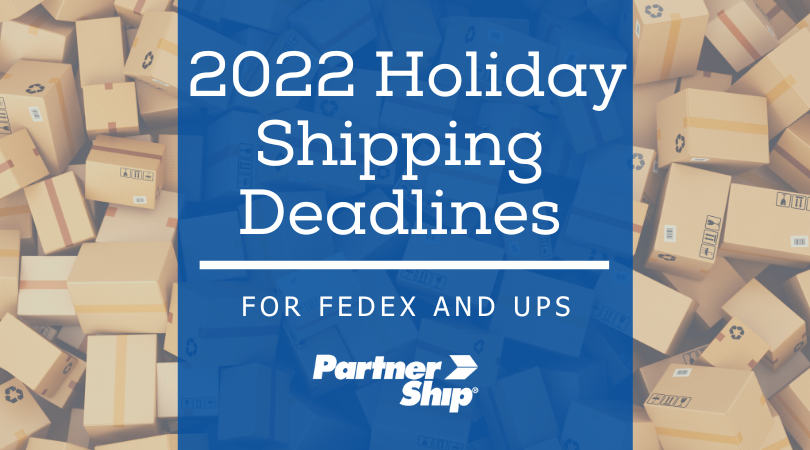
As you prepare your store for the influx of orders that come with the holiday season, you’re going to want to keep an eye on the shipping deadlines. Both FedEx and UPS have announced the last dates you can ship your orders and make it in time for a Christmas delivery.
It’s important to note these deadlines because demand surges this time of year. The carriers' networks are already strained, and it’s only going to get worse the closer we get to the holidays. To keep your customers happy and set the right expectations, we recommend clearly communicating the shipping cutoff dates and adding in extra days in case of delays.
FedEx has published a complete visual list of the last days to ship. Here are some highlights for domestic shipments:
- December 8 for FedEx Ground Economy
- December 14 for FedEx Ground and FedEx Home Delivery
- December 20 for FedEx Express Saver
- December 21 for FedEx 2Day and 2Day AM
- December 22 for FO, PO, SO, and Extra Hours
- December 23 for FedEx Same Day
UPS has also created a list of the last days to ship for Christmas delivery. Unfortunately, one thing that is missing is a specific cutoff date for Ground shipments. You will need to get a quote on the UPS website instead. For domestic UPS air shipments, the dates are as follows:
- December 20 for UPS 3 Day Select
- December 21 for UPS 2nd Day Air
- December 22 for UPS Next Day Air services
It’s also important to note that service guarantees are currently suspended for both FedEx and UPS ground services. It's also suspended for select air/express services. The main takeaway? You’ll want to encourage your customers to order early and do what you can to add in extra days when setting delivery expectations.
If you're looking for any additional guidance or need a way to lower your small package costs, PartnerShip can help. Contact our team today.
Click to read more... -
Ranking the Top 3 Retail Shipping Mistakes
05/05/2022 — Jen Deming
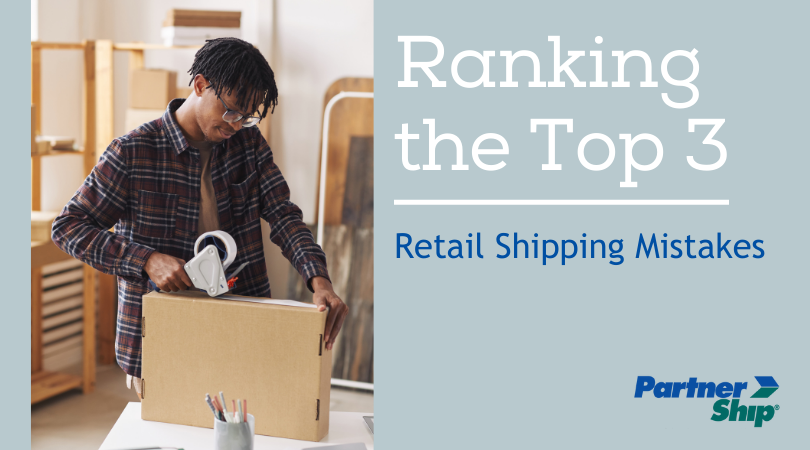
Successful retailers have to be next-level multitaskers. However, with so many operating as small businesses, a large portion are running things without a dedicated shipping department. Doing this may be necessary, but it’s easy to make costly mistakes. By looking at what errors are the most important to be wary of, retailers can better sort out the correct way to manage their small package shipping. Let’s take a look at the top three retail shipping mistakes to avoid, starting with #1.
Mistake 1 - Giving inbound shipment control to your vendors
When you’re receiving inbound shipments, oftentimes the shipping is arranged by vendors. This may seem like the easy way to go, but you could be overpaying on each shipment from every vendor, compounding cost and other challenges that may affect your business. When the vendor arranges your shipping, they choose the carrier and control the cost of transportation, making this a very common retail shipping mistake.
Why choose inbound collect over vendor prepaid?
Choosing inbound collect shipping over vendor prepaid can give you better control over what you’re spending on your shipments and which carrier is used. You can also control which services your business needs, such as specialized equipment or accessorials like liftgates. Additionally, being invoiced directly by the carrier may eliminate any handling or markup fees your vendor could add into the total charges.
PartnerShip can help simplify the process
While managing your inbound orders may seem like a lot of work, partnering with a 3PL can help reduce the amount of effort you have to put in. A quality 3PL like PartnerShip can provide you with competitive pricing and determine if switching from vendor prepaid to inbound collect makes for your business. Inbound experts at PartnerShip can also help create routing instructions and review and enforce vendor compliance.
Mistake 2 - Ignoring DIM weight pricing
Dimensional (DIM) weight pricing is a strategy implemented by carriers to offset the cost, time, and energy spent on moving large or bulky shipments through the small package network. This pricing structure focuses on the amount of space your shipment takes up in relation to its actual weight. Overlooking the impact of DIM weight pricing on your total costs is a crucial retail shipping mistake.
Your DIM weight is determined by the dimensions of your shipment. To cut down on time wasted in your already-packed schedule, we have created a DIM weight calculator. If the figure you calculate is higher than your actual weight, then that is what you will be billed on.
Luckily, there are some strategies that retailers can use to help limit DIM weight charges:
- Right-size your packages by minimizing wasted space inside boxes
Consolidate orders to reduce the total amount of packages being sent
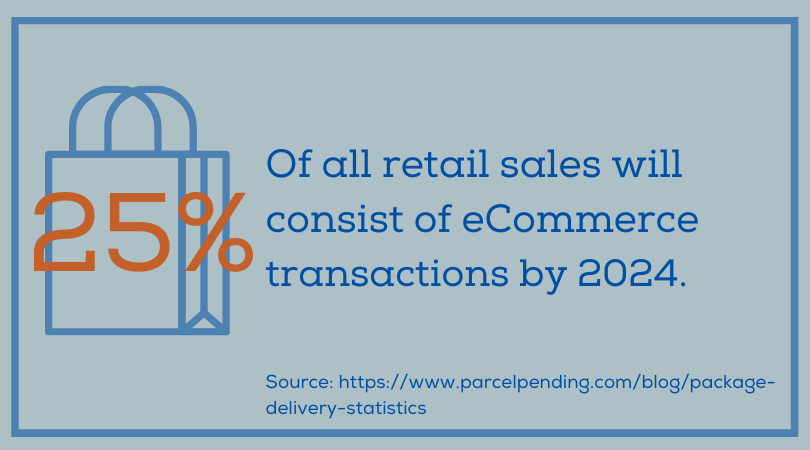
Why retailers need to be mindful of DIM weight
Retailers ship a lot of small packages, whether you’re receiving orders from suppliers or shipping purchases out to customers. In fact, a large component of retail sales are comprised of ecommerce. Due to the sheer volume of packages being shipped, costs can multiply rapidly, especially if your packages are subject to DIM weight pricing. Retailers must be strategic about how orders are packaged.
Mistake 3 - Not taking advantage of shipping discountsThe worst shipping mistake that retailers can make is assuming the current rates you’re getting are the best available to you. While large retailers may be able to negotiate substantial discounts directly with FedEx or UPS, it’s more challenging for smaller businesses, especially when many of the discounts are based on volume or may just be promotional.Small businesses can succeedSmaller retail businesses can still obtain discounts through their affiliations. Trade associations, chambers of commerce, or other organizations will oftentimes offer discounts to businesses. By partnering with a variety of service providers, your membership dues can be offset by the benefits and discounts you receive.PartnerShip works with over 130 trade associations and other groups, including several well-known retail organizations, like NSRA and NAMM. By leveraging carrier relationships and industry connections, we help make exclusive FedEx discounts available to retailers, no matter the size of your business or shipping volume.Avoiding mistakes is the first step to successful small package shippingSmall package shipping can be challenging for any team, especially for smaller retail businesses who may not even have a dedicated shipping department. Retailers must keep in mind that they have a few extra important shipping mistakes to avoid that could cause you to pay more for shipping than necessary.No matter the size of your retail business, avoiding these common pitfalls can ensure smooth shipping and lower costs. PartnerShip can help with every one of these challenges, including obtaining competitive pricing. Get in touch with the small package experts at PartnerShip to learn more.
Click to read more... -
7 Strategies to Conquer Peak Season Returns
10/25/2021 — Jen Deming

Shipping during the holidays can be a quite a challenge. Getting packages delivered on time is tough enough, but peak season returns can be an even greater headache. Return shipping is just a part of the retail experience, but with proper planning it is possible to control. Review these seven strategies before you create that plan to help to ensure a more seamless process for your peak season returns.
Strategy #1: Commit to full transparency regarding your return policy
When you think about your own shopping preferences, it becomes clear that reviewing a return policy before purchase is standard procedure. This is especially important if your peak season return policy is different than the rest of the year. Shoppers want to know what they’re getting into before they click “place my order.” When a retailer makes return information easily accessible, the buyer is more likely to make a purchase because there is less risk.
Proactively communicate the policy in places like order confirmations and follow-up emails. It’s also key to stay in contact during all stages of the buying process. Send order tracking links in emails, send delivery notifications, and create a clear FAQ section on your website that includes contact options. The more information you have readily available for customers, the more confident your buyers will be.
Strategy #2: Optimize your packaging procedures
Shipment volume is alarmingly high, and will be compounded during the holidays. During peak times, your packages will spend more time in transit and encounter more stops along the way. That means more handling at service terminals, which can result in added damages. Take a hard look at your return rates related to damaged shipments. If you’re seeing an above-average trend, consider whether your packaging procedures need to be adjusted. It may make sense to use boxes rather than mailers, for example. Minimizing extra space and adding more bubble wrap or packing foam can better protect your products. If you’re sending out large items, consider breaking them down for transit rather than shipping them assembled. Don’t underestimate how much your packaging can affect your return rate due to damages.
Strategy #3: Limit returns that are caused by late deliveries
There are always last-minute holiday shoppers — you might even know a few. Late deliveries often lead to returns during the peak season, since they didn’t arrive in time for the big date. Ensure that you make it very clear for customers what the cutoff dates are for their order to be shipped in time for Christmas. An easy-to-scan reference table of this information will help your shoppers avoid late arrivals.
To determine those cutoff dates, be sure to review the deadlines published by your carrier. You may also want to add in some buffer days in case of any unforeseen delays. During the peak season when demand is high, unfortunately there can be a higher risk of your orders not being delivered in time.
Make sure you’re also offering expedited options at check-out, to provide a solution for shoppers who need a quicker turnaround. For serious stragglers, offer in-store pick-up if you have a brick-and-mortar option.
Strategy #4: Improve your returns plan by auditing your process yearly
It’s never a good idea to assume this year’s peak season returns strategy should be the same as last year. Every year, your returns plan and options need to be reviewed. Your first step should be to take a look at your returns rate and the reasons for the returns. Find out whether items are being returned due to product performance, or other issues like damages or late delivery. If it turns out that you have a shipping issue, make sure you’re following our tips mentioned above.
After you take care of any shipping challenges, look at what returns options measure up with what you can feasibly afford. Free shipping of any kind is a perk, but you need to be mindful of your budget and compensate for that expense. Consider a flexible policy, such as free returns on full-price items, or within a certain window of time. Think about charging for delivery, but keeping returns free. When you’re reviewing whether these options will fit your budget, don’t forget to check carrier rate changes and peak surcharges, both of which affect your shipping costs. From there, you can adjust your returns plan as-needed.
Strategy #5: Consider on-demand warehousing to simplify orders and returns
The overhead costs involved in setting up and maintaining a warehouse are expensive. Due to the cyclical nature of the industry, many retailers don’t find it worth it to use in-house solutions. On-demand warehousing is a great opportunity for businesses that need short-term fulfillment options but don’t want to be under contract. This strategy helps increase flexibility by housing inventory only when needed. If you have seasonal inventory overflow, on-demand options can help eliminate long-term commitments. For businesses that do not need a warehouse year-round, on-demand warehousing is the way to go.
Strategy #6 Give your customers a variety of return options
Consumers want return options that fit into their busy lives. Don’t complicate the relationship you have with your customers by making an already disappointing situation even worse. Offer methods that fit preferences and convenience, such as a choice to return product online and in-store. In-store returns give retailers more facetime with the customer and offer a better chance of turning the transaction into an exchange. However, many shoppers want the convenience and time-saving choice of shipping back their order. Consider using carriers like FedEx that allow drop offs at a variety of locations, including FedEx Ship Centers, drop-off boxes, Office Depot, Walgreens, and more.
Strategy #7 Make shipping peak season returns as easy as possible for your customer
While you probably want to avoid returns as often as possible, don’t try to dodge them completely by making the process super complicated. Smart retailers know that they cannot always be avoided — the ultimate goal is to use returns as an opportunity to increase brand satisfaction. Remind your customer of your returns and replacement policy throughout the buying process. Include return information on your order confirmation page and within follow up emails. Choose secure packaging that can be reused if needed, and include labels and instructions for returns with the product you’re shipping out. Think long-term — customers that have a bad experience with a retailer this year, will actively avoid them in the future. Making returns easy creates a positive buying experience, and increases confidence for both you and the customer.
Putting the strategies into action
Retail and peak season returns go hand-in-hand. They aren’t ideal, but if you know how to prepare, manage, and use them to your advantage, your business can thrive during the holidays. PartnerShip has strong relationships with a variety of retail groups, and we are uniquely positioned to help strategize your returns process in a way that works best for your business. From on-demand warehouse solutions to saving money on the costs of returns, we can help make your holiday season a success.

Click to read more... -
4 Ways to Ruin Your Holiday Shipping
10/18/2021 — Jen Deming
Parcel shipping during the holidays is tough. From inventory mismanagement to carrier delays, there are plenty of obstacles that can get in the way of a seamless holiday shipping experience. In our newest video, we take a look at the four mistakes that can absolutely sabotage your peak season shipping.
Click to read more... -
How Small Retailers Can Save on Shipping Without Volume Discounts
08/12/2021 — Jen Deming
Small businesses have it tough, and the fact that volume shipping discounts aren’t always an option makes shipping expensive. The good news is that small retailers have options to decrease shipping expenses without having to rely on volume discounts. Check out our helpful video to learn how.
Click to read more... -
5 Crucial Holiday Shipping Strategies for Ecommerce Sellers
10/09/2020 — Leah Palnik
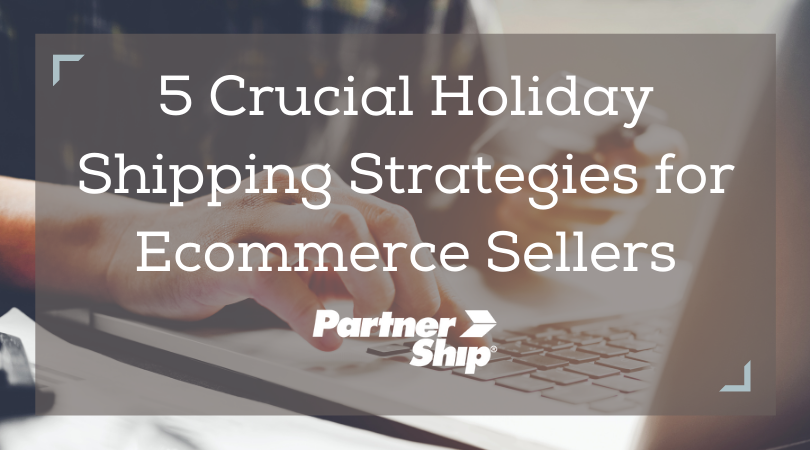
As a consumer, it might feel like it’s too soon to start thinking about the holidays, but retailers know that waiting is not an option. If you’re an ecommerce seller, you’ve probably already been stocking up your inventory and preparing for the increase in traffic to your site. As you’re getting ready for this busy time of year, keep these crucial holiday shipping strategies in mind.
- Reduce your parcel rates
Shipping orders to your customers can get expensive, fast. While some of the big players in ecommerce can negotiate discounted rates directly with FedEx and UPS, that doesn’t mean that the smaller sellers have to suffer. If you belong to a trade association or a chamber of commerce, check out their member benefits. Many groups offer parcel discounts with UPS or FedEx that are included as part of your membership. - Consider on-demand warehousing options
If you don’t need year-round warehouse space, but your orders ramp up significantly during the holiday season, consider using on-demand warehousing. This can help alleviate the pressure on your existing operations, in a time when it’s crucial that everything runs smoothly. A key part of this strategy is also the added ability to reach your customers sooner. It’s no secret that meeting customer expectations for deliveries is essential to your business, and with the right warehousing partner, you’ll be able to reduce transit times and gain access to cost-effective expedited services. - Clearly communicate shipping deadlines
There are some of us who are guilty of waiting until the last minute to do their holiday shopping. When’s the last day to order for Christmas? Do you offer expedited options or any special seasonal guarantees that could give you a leg up over the competition? Managing customer expectations for holiday shipping will increase your customer satisfaction. Clearly communicate this information on your website, during the purchasing process, and in emails to your subscribers. - Consider special promotions
Now is the time to pull out all the stops to maximize your sales. People are looking to buy, and it’s your job to incentivize them to spend their hard earned dollars on your site. According to a report by the National Retail Federation, 50% of shoppers cited a limited-time sale or promotion as the reason they were swayed to purchase an item they were on the fence about.
Even more notable, 64% of shoppers said that free shipping has influenced them to make a purchase. Offering free shipping has become the new normal in the world of ecommerce. If you’re worried about the costs of “free shipping” there are several different strategies you could try. For example, try setting the free shipping threshold above your average order amount to increase the amount people spend when making a purchase on your site. When executed properly, consumers will be more likely to add items to their cart to meet the minimum and it becomes a win-win. - Set up a streamlined returns process
With increased holiday sales comes the inevitable – returns. According to a Narvar Consumer Report, 74% of customers said return shipping fees will prevent them from making a purchase. On the flip side, 72% said that a “no questions asked” return policy would make them more likely to buy from a retailer. The influence of the return policy on the purchase decision is undeniable. Make your return policy as customer friendly as possible and communicate it clearly at the beginning of the shopping experience. Also, take proactive steps like providing return labels in the original order and offering in-store returns so it is less of a headache for you and your customers.
Striking a balance between appealing customer promotions and the right holiday shipping strategies can help make your season bright. If you need to reduce your parcel costs or could use some help with storage and fulfillment, PartnerShip has you covered. Our shipping and warehousing services set ecommerce sellers up for success. Contact us today to learn how you can ship smarter.

Click to read more... - Reduce your parcel rates
-
Vendor Prepaid versus Inbound Collect Shipping
07/24/2019 — Leah Palnik
One of the simplest and easiest ways to immediately cut your inbound freight costs is to change your shipping terms from "prepaid and add" to "collect." Having your vendor or supplier ship collect on your recommended carrier eliminates any handling charges, thus saving you money.
When you gain more control over your inbound shipping, you can save on small package and freight shipments coming into your business every day. As the buyer and receiver of the goods, you can and should designate the carrier and arrange for shipping charges to be billed directly to you at your discounted rate. This is called routing shipments inbound "collect." Collect is a billing option, in which you are invoiced by the carrier. It does not mean paying the driver at the time of delivery.
In general, there are many benefits to having your inbound shipments routed collect. First, it usually saves a lot of money. But even if you don't have as aggressive freight deals as your vendor, their handling markup could be a lot higher than your freight deal.
Shipping inbound collect also reduces the number of carriers from different suppliers arriving at your receiving dock every day. When you control the routings, you control how many trucks deliver to your door. That also makes it easier to maximize your staff's efforts.
There may be some cases where your supplier's prepaid freight can actually benefit you. First, some suppliers do not add any fees for handling, and freight is just a pass-through. In this instance, you may want to continue having your supplier pay the freight to save some time and money. But if you are trying to consolidate the number of trucks at your dock, and increase the control you have over inbound shipping, it might still be worth routing by your carrier, even if it will cost you more.
Another example of where inbound prepaid may continue to make sense is if your supplier has poor packaging. If you have a supplier that ships a high-value product with suspect packaging, you may want them to prepay and add the freight. Even if they are charging a premium for freight, you do not want to deal with the hassle if that shows up at your door damaged. You will be much better off refusing it and letting your supplier deal with the claims process if there are any damage issues.
Conclusion
Taking control of your inbound shipping may take a little work, but the final payoff is reducing your overall inbound freight spend. If you're ready to take control of your inbound shipping and you're not sure where to start, PartnerShip has the process, tools, and experience to help.
- We can provide a complete, inbound freight analysis to help you determine where you can save additional money on your inbound shipping
- We provide simple inbound supplier/vendor management forms making it easy to choose which vendors you use most frequently
- We create updated routing requests and shipping instructions and then we contact your vendors on your behalf
- We maintain great relationships with the common suppliers in the industry to gain routing compliance
- We can provide inbound shipment visibility reports so you know exactly what was shipped to you and by whom
- We consolidate and audit all of your inbound freight bills so you can enjoy the simplicity of a single invoice
Contact PartnerShip today and take control of your inbound shipping!
Click to read more... -
4 Essential Holiday Shipping Tips for Retailers
09/04/2018 — Jen Deming
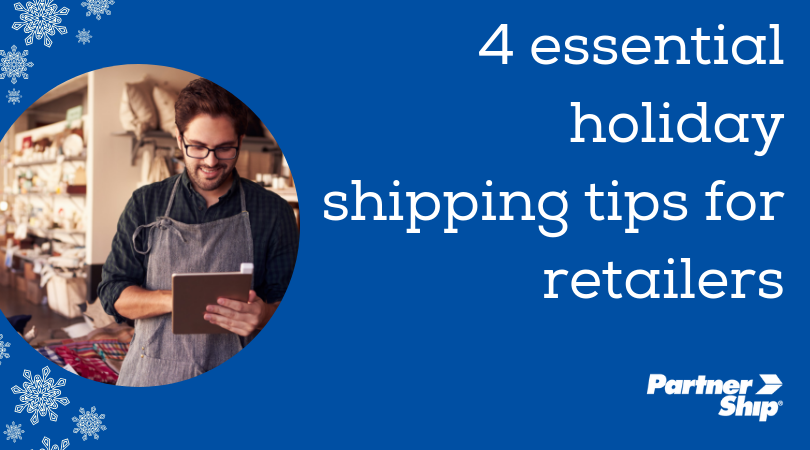
Holiday shipping is fast approaching for retailers. Though the season of gifting and good tidings seems miles away (and most of us have probably not even begun to think about our OWN shopping lists), it's never too early to start your holiday shipping prep. You may have already brainstormed your plan of action and received some inbound items and supplies, so now's the time to make that yearly best practices list. We've compiled a few holiday shipping tips specific for retails to make sure your busy season passes smoothly.
Tip 1: Prepare your inventory and manage your inbound shipments
As the saying goes, you have to learn to walk before you run. The very first step in great holiday shipping preparation is getting your inventory and inbound shipments from vendors in order. Taking control of your inbound shipping is crucial to being set up for holiday success. Plan ahead by looking at your past holiday seasons' wins and opportunities, check industry trends, and do your best to forecast just how much product you may need to make it through your holiday season. If you feel you will need a replenishment order, communicate with your vendors to make sure they are clear on when you will need the product (and build in some extra time as a cushion). If you are able to, consider managing your own routings by selecting your own carrier and directing your vendors on your precise shipping expectations and needs. This control can give you better peace of mind that shipments are being handled reliably and to your specifications. An added benefit to managing your own inbound shipments from vendors is that you can price shop for the best service level and carrier that fit your budget.
Tip 2: Invest time in planning and budgeting
The elevated cost of shipping during holiday peak season is just a reality for shippers, but most believe it's just the price of doing business.. Budgeting and planning what you can expect to pay during the crunch can make or break your bottom line. Not only will you be spending more overall due to an increase in volume, certain carriers implement surcharges during this period, so it pays to do your research. For the second year in a row, FedEx has announced it will NOT apply a peak season surcharge on residential shipments. UPS, however, will be implementing a surcharge on those shipments from November 18 through December 1 (in line with Black Friday) and again from December 16 through December 22 (last minute rush). The surcharge ranges depending on the service, from $0.28 to $0.99 on most residential packages, which can add up as volume increases. Larger packages will also include peak surcharges by both small package carriers, with the most expensive charge costing $165 per package. Which charges apply will depend on your package dimensions and weight, so make sure to educate yourself before the holiday rush begins.
Tip 3: Take control of setting customer expectations
The best way to ensure your holiday shipping will run smoothly, specifically from the customer's perspective, is to let them know what they can expect even BEFORE they make a purchase. It's a good idea to take a look at how your business performed last year, check through any customer issues for common themes, and adjust where you may need to. Use your website to its full potential - utilize clear and consistent language that addresses shipping costs, delivery times, order deadlines, and return policies, and make sure they are easy to find. Update your FAQ section and any links that may be relevant to holiday shipping time tables or price breakdowns.
In addition to your website, be sure to use email as an additional measure to touch base with your customers. Send out communications to past customers about any new policy changes BEFORE they put in this year's order. Send order confirmations, followed up by shipping confirmations. Many businesses send out notifications for delivery attempts or completions. These added touches not only communicate effectively to your customer but leave a positive impression of your company's reliability.
Tip 4: Make your returns process easy
As we touched on in the last tip, communication with customers is key to keeping expectations realistic and managing the consumer experience during the holiday shipping season. Another area that many retailers tend to overlook during peak holiday boom is the returns process. According to the National Retail Federation, three out of every four holiday shoppers checks the company return policy before committing to making any purchase.
Every retailer can do their best to avoid returns by being sure each product listing is as accurate and updated as possible, in order to avoid most surprises when it arrives at your customer's door. However, despite all of your efforts, returns are going to happen. If your business is going to handle and accept online returns, the more you can automate the process, the easier it will be on both you and your customer. The majority of customers are not willing to pay premium for return shipping. Price is the most significant deciding factor, so don't waste time offering faster, more expensive return services. Providing pre-printed return labels, packaging, and instructions can all improve the customer experience, lessen the returns headache for your operations team, and increase future value for your brand.
Summer may only just be winding down, but retailers are already thinking of what's on winter wish lists. It's never too early for holiday shipping prep, and being proactive is the best way to avoid a stressful peak season. In addition to our tips on planning, inventory, and streamlining your returns process, it's helpful to have the experts on your side. At PartnerShip, we know a thing or two about the peak season boom. We are happy to help you ship smarter, and with less stress, this holiday season, contact us today!
Click to read more... -
FedEx and UPS Peak Season Surcharges: The Important Differences
08/09/2018 — Leah Palnik

FedEx recently announced that for the second year in a row, it won’t be applying a peak season surcharge on residential shipments. This is good news for retailers who expect a significant amount of e-commerce orders over the 2018 holiday season.
UPS, however, will be instituting a surcharge on residential ground shipments from November 18 through December 1 and then again from December 16 through December 22. UPS will be charging $0.28 per package for most residential shipments using ground services. For UPS air services the fees are as high as $0.99 per package.
UPS delivered around 700 million packages during the 2017 holiday season – a huge jump compared to the rest of the year. Ordering online has become so commonplace and easy for shoppers, and the carriers are feeling the effects. The increase in volume over the holidays drove UPS to introduce this new peak surcharge for the first time last year.
Typically UPS and FedEx have comparable rates and surcharges and will mimic each other’s changes, so this is a notable distinction between the two small package giants.
FedEx is sending a clear message to shippers. “FedEx delivers possibilities every day for millions of small- and medium-sized businesses,” said Raj Subramaniam, executive vice president and chief marketing and communications officer at FedEx Corp. “We are demonstrating our support for these loyal customers during this critical timeframe by not adding additional residential peak surcharges, except for situations where the shipments are oversized, unauthorized or necessitate additional handling.”
It’s important to note that both carriers are implementing charges on larger packages. With the rise of e-commerce, people are ordering items online that they would’ve exclusively purchased in-store in the past – including televisions and appliances. FedEx and UPS have made several adjustments to account for these trends, including a pushback on larger packages. Heavy and bulky packages don’t move through their automated systems and require more attention. FedEx and UPS are putting a price tag on that loss in efficiency and shippers need to stay aware.
FedEx will apply peak surcharges for larger packages from November 19 through December 24:
- $3.20 per package for shipments that necessitate additional handling
- $27.50 per package for shipments that qualify as oversize
- $150.00 per package for shipments that qualify as unauthorized
UPS will apply peak surcharges for larger packages from November 18 through December 22:
- $3.15 per package for shipments that necessitate additional handling
- $26.20 per package for shipments that qualify as large
- $165.00 per package for shipments that qualify as over maximum limits
If you’re not careful, the surcharges can add up fast. These peak surcharges are in addition to the already existing surcharges that apply to larger packages, and any others that may apply including delivery area and residential surcharges.
Retailers should take note of these peak season changes to ensure a profitable 2018 holiday season. If you see a significant amount of online orders over the holidays and ship with UPS, you’ll be paying an extra $0.28 per package, which will eat into your bottom line.
To prepare, take a look at what you shipped last year around the holidays and determine a forecast for this season. From there you’ll be able to see how much more you can expect to spend during the designated peak season. You may find that switching from UPS to FedEx for the busiest time of the year will provide you with a decent cost savings. Depending on the billable weight of your shipment and the destination, the base rate could be lower with FedEx – compounding the savings during peak season. It’s worth evaluating the options, when the holiday season can make or break your year.
There are many factors to consider when deciding how to ship your small package shipments. You need an expert on your side. ParterShip manages shipping programs for over 140 associations, providing exclusive discounts on small package shipments to their members. To find out if you qualify or to learn how you can ship smarter, contact us today.
FedEx and UPS rates will be going up after the holiday season! Make sure you know what to expect so you can mitigate the impact to your bottom line. Our free white paper breaks down where you'll find the highest increases and explain some of the complicated changes you need to be aware of.

Click to read more... -
Reduce Your Carbon Footprint With These Eco-Friendly Shipping Tips
03/16/2018 — Leah Palnik

With freight trucks being a top contributor to air pollution, eco-friendly shipping may seem like an oxymoron. However, there are some green shipping options that can help you reduce your carbon footprint.
According to SmartWay, an EPA program committed to advancing supply chain sustainability, the transportation sector is responsible for over 50% of nitrogen oxides (NOx) emissions, over 30% of volatile organic compounds (VOCs) emissions, and over 20% of particulate matter (PM) emissions in the U.S. All of these pollutants contribute to poor air quality and put the health of people and our environment at risk.
SmartWay also adds that by 2025, shipments of U.S. goods are predicted to grow another 23.5%, and a total of 45% by 2040. As this trend continues upward, it’s more important than ever to offset the harmful effects of transportation-related pollution and harm to the environment.
1. Choose partners committed to eco-friendly shipping
You have options when it comes to selecting brokers and carriers to work with. It’s imperative that if you’re interested in eco-friendly shipping, that those responsible for moving your freight make concerted efforts to reduce the environmental risks involved with that transportation.Before choosing to work with a broker or carrier investigate what kind of green shipping options they offer. For example, FedEx provides EarthSmart solutions, which includes initiatives like environmentally friendly packaging, fuel efficiency management, and eco-friendly vehicles. UPS has options for sustainable packaging that include reusable envelopes and an eco responsible packaging program.
You can also look for brokers and carriers that are SmartWay certified. This EPA program helps to reduce fuel use and increase efficiency. To become a SmartWay partner, the broker or carrier need to meet strict criteria and accountability standards. SmartWay also provides performance metrics each year for increased transparency.
2. Go green with your packaging
Investing in eco-friendly shipping supplies is another way you can reduce your carbon footprint. For e-commerce shipments, use products that were made from recycled materials or regenerative natural resources. There are a number of companies that sell environmentally conscious supplies. For example, EcoEnclose sells packaging products that meet stringent sustainable packaging criteria. It takes into account the recycled materials a product is made of as well as the carbon footprint across the entire supply chain.On top of using packaging that is environmentally friendly, right-sizing your boxes is another way you can go green. Not only will it eliminate extra materials, but eliminating the extra space will help protect against dimensional (DIM) weight pricing. When you use packaging that is larger than the contents inside, you run the risk of paying to ship unused space. Not sure if DIM weight pricing would apply to your package? Check out our helpful DIM calculator.
To right-size your packages, look into ordering boxes that are customized for your products. EcoEnclose products are fully customizable from the box style, to the size and strength, and can even add your branding. You can also use FedEx Packaging Services, which offers design assistance as well as package testing so you can be confident that your package will hold up in transit.
For larger shipments, there are green shipping options for your pallets. You can purchase recycled pallets or use a pallet recycling program, like Millwood offers. The Millwood pallet recovery and recycling program will repair damaged pallets or completely remanufacture them. They also offer a green disposal process for pallets that are no longer useable – repurposing pallets into yard mulch, animal bedding, and more.
3. Consolidate orders
If you’re in the e-commerce space and you want to do your part to reduce carbon emissions and implement an eco-friendly shipping strategy, think about consolidating orders. In the age of Amazon Prime, consumers are expecting quicker and quicker delivery, which can make consolidating difficult. However, you can offer customer incentives like credits or freebies for selecting slower delivery options. If your customers are environmentally conscious, developing and marketing a “green shipping option” they can select could even be incentive enough. Also consider setting an order minimum before providing free shipping. This could cause customers to order several items at a time instead of placing separate one-off orders.Consolidating orders can not only reduce the amount of vehicles on the road and the resulting emissions, but it can also save you money. For example, in many cases the cost to ship three 10 lb. boxes is significantly more than the cost to ship one 30 lb. box. It’s a win-win.
4. Make donations to offset your impact
This is perhaps one of the most obvious ways to move towards more eco-friendly shipping. Making donations to environmental programs for your shipments is a great green shipping option, and Carbon Fund offers an interesting way to do so. Use their shipping calculator to determine the carbon footprint of your shipments, then select a carbon offset project to donate to. They offer projects in energy efficiency, reforestation, and renewable energy to choose from. There are a large variety of projects, from one that collects and destroys landfill gas, to one that reduces tailpipe emissions by providing truck drivers with heating, air conditioning, and appliance services without requiring to idle their engine.Overall, you can decide to take big or small steps towards a more eco-friendly shipping strategy, and every little bit helps! As a SmartWay partner, PartnerShip is committed to helping reduce the environmental impact from freight transportation. Get a free quote on your next shipment and start shipping smarter!

Click to read more... -
Slow Season Tips for Shippers
02/19/2018 — Jen Deming
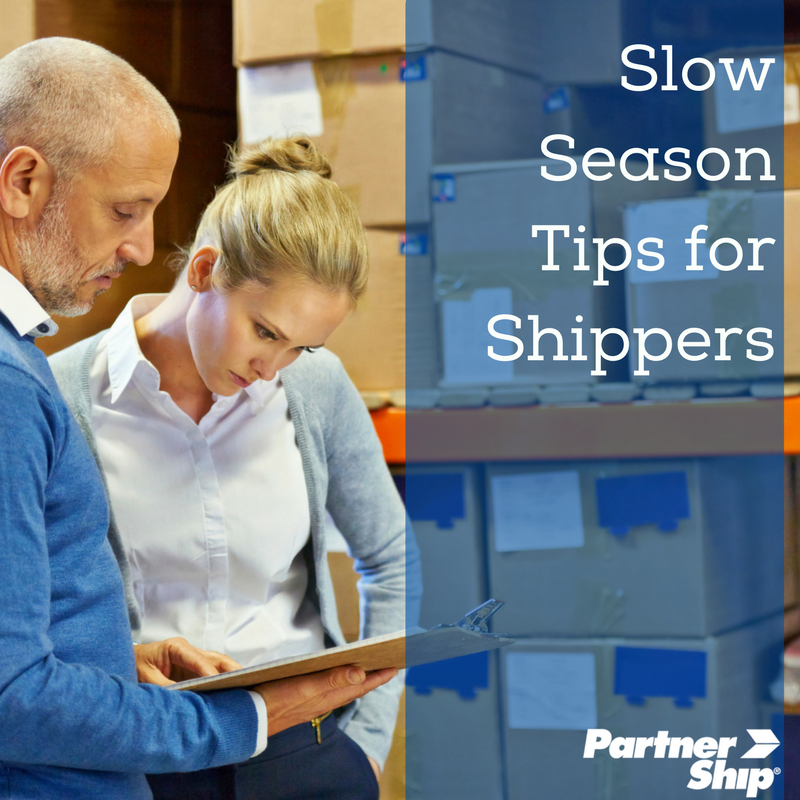
The make-or-break peak season for shippers has passed, and the holiday rush and subsequent surge of returns is over. Months of preparation and planning have paid off and now is the time businesses get to take it easy and enjoy the lull, right? Truth is, this is the most valuable time you can use to plan and forecast for the next year, so you better make the most of it. Here's some core tips on what shippers and business owners can do during the intermission.
Review and Reflect
One of the most important things a business can do almost immediately after a peak shipping season ends is step back and review how the busy period went. By taking a high-level look at successes and opportunities, it's easier to see what adjustments need to be made for more efficient operations in every area of business for a better bottom line. Is your industry consistently cyclic? Are busy times evolving into lengthier periods? Do you need to prepare earlier than you used to? Did you have a large enough workforce to fulfill orders easily? How effective were your marketing promotions? It's also imperative to take a closer look at this year's expenses and where most of your costs, both anticipated and unforeseen, were invested. How close did you come to your projected budget for the period? These are all variables that you need to look at in order to have successful subsequent peak seasons.
Plan Ahead
With less stress on order production, fulfillment, and replenishment, it's a great time to get organized and focus on what you can't during peak season. In order to operate more productively, it's important to make sure everything is in order from top down – office space, production facilities, and warehousing. Reviewing everything from payroll applications, updated production equipment, inventory strategy, and warehouse management technology is crucial in identifying potential roadblocks that may impede your business from operating at maximum potential. It's also a great time to reinvest in your staff, from developing additional training programs to conducting employee reviews on workplace culture and performance. With less immediate emphasis on production and meeting deadlines, a forward-looking business can also evaluate industry trends as well as evaluate peers. That way, you can better project what you need from purchasing inventory to hiring your sales force.
Inventory Overhaul
Good inventory management procedures are important in creating a seamless peak period, specifically for order fulfillment and replenishment. Now is the time to implement proper organization and best practices, in order to maximize efficiency and save time and money on the front-side. Depending on budget and expenses, the slower period is a good time to take a look at updating tech and software. RFID (radio frequency identification) systems, wireless LAN, and bar code systems can all help with monitoring of your sell-through cycle by improving accuracy giving you real-time data. It's also a very good time to take a look at your inbound shipping procedures for your supply orders. Are your vendor-directed options making sense for your business and your customers? If you haven't already, it's a good time to take control of your inbound shipping and take advantage of available alternatives.
Shipping Analysis
To piggyback off of inventory management, it's a great idea to take a look at your shipping procedures as a whole. Was there a high amount of damages to your shipments during transit? Limiting the costs put into freight claims replacement orders is a great way to avoid unexpected expenses, and you can do this by reevaluating packaging type and procedures. Did you have difficulty hitting delivery deadlines? Oftentimes, fulfillment centers can charge for late arrivals or hold-overs in addition to sort and segregation fees. It may be smart to take a look at your available carriers or service options to see which make the most sense for your business and your customers. Different service options can save you time and offer peace of mind about the security of your shipments. With more time available to shop options, it's a great opportunity to collect shipping invoices and conduct a shipping audit with different carriers to see if you are getting the best rates available. Shipping costs add up, especially during heavier freight times, and this is another effective way to keep your expenses down.
Remaining vigilant and being proactive after peak season is crucial for businesses to prepare for upcoming peak periods. Taking a look at what can be improved going forward, and what worked for you in the past an ensure success, and less stress! A huge portion of preparing your business is making sure you have your shipping processes streamlined, and the experts at PartnerShip can help. From analyzing your freight costs, to making sure you have the proper services selected for your shipments, we find the solutions that are right for you. Call 800-599-2902, email sales@PartnerShip.com, or click below to get a free quote today!

Click to read more... -
What is Guaranteed LTL Shipping and When Should I Use It?
03/02/2017 — PartnerShip
What is guaranteed LTL service? It is a guarantee that your freight arrives by a pre-determined time of your choice on a standard-service delivery day.
It is very important to understand that LTL freight shipments are typically quoted with an estimated transit time. LTL freight carriers all have their own standard transit times, which take into consideration distance, the shipping lane in which the freight is moving and availability of trucks moving between the freight’s origin and destination. As an example, a carrier may estimate that freight moving between Atlanta and Chicago is two standard delivery days. Transit times are generally reliable, but again, are just an estimate so your shipment may be delayed.
The standard LTL freight guaranteed delivery is a 5:00pm guarantee, which means that your shipment will be delivered by 5:00pm on your specified date of delivery. Another commonly used guarantee is a noon guarantee, where your freight must be delivered by noon on your specified date of delivery.
There is also a LTL guaranteed delivery window service, where you specify a time period in which a shipment must arrive (between 1:00pm and 3:00pm, for example).
When should you use guaranteed LTL service?
- When you are shipping to a retailer that has strict
delivery window requirements, or a MABD (Must Arrive By Date). Missing these delivery
dates and / or times may result in chargebacks of around 3% of the value of the
purchase order. So if an order valued at $50,000 was early or late, you’d pay a
$1500 fine. Paying extra for guaranteed LTL shipping is a small investment.
- When your customer requires just-in-time (JIT) delivery. If you
are shipping components to a manufacturer that utilizes JIT methodologies, a
delay in your component arriving may delay their production run, or shut it
down completely. This may result in a per-minute fine if your late delivery causes
a shutdown in production, or you may lose their business entirely.
- Similarly, if the delivery is required for an
installation in new construction or as a repair or replacement. For example, if
you are shipping a stainless steel fermentation tank to a new brewery, it needs
to arrive when the construction team needs it so that it can be installed and
not cause delays to their build-out schedule.
- When other shipping activity relies on your shipment
arriving at a specified time. For instance, you are shipping squishy stress
relief balls to a national non-profit association as part of an event
sponsorship. These stress balls, along with other sponsors’ promotional items,
will be put into “goodie bags” for event participants and shipped to local
chapters across the county for distribution. If your item doesn’t arrive in
time, it may be left out, and you may lose the brand impact that your
sponsorship was supposed to provide.
We have a couple of caveats to pass along regarding guaranteed LTL freight shipping. First, your shipment must happen during “business hours” on “business days.” This excludes holidays, so you should never assume that a guaranteed delivery can take place on a holiday. Second, it is important to find out if a guarantee is even available for your LTL freight shipment before you assume that one is. Some examples that may exclude a guarantee:
» Collect-on-Delivery (COD) shipments
» Oversized shipments
» Hazardous materials shipments
» Service to some remote areas
If you have questions about when to use guaranteed LTL freight service, or how to find freight carriers that offer guaranteed freight delivery, contact PartnerShip. We can help you stay competitive by matching your LTL freight shipping needs with the correct service option. Contact us at 800-599-2902 or get a quote now!
Click to read more... - When you are shipping to a retailer that has strict
delivery window requirements, or a MABD (Must Arrive By Date). Missing these delivery
dates and / or times may result in chargebacks of around 3% of the value of the
purchase order. So if an order valued at $50,000 was early or late, you’d pay a
$1500 fine. Paying extra for guaranteed LTL shipping is a small investment.
-
Changes Coming to the FedEx Additional Handling Surcharge
04/28/2016 — Leah Palnik
FedEx currently applies an additional handling surcharge to packages with a length greater than 60 inches, but after June 1 the threshold will be lowered to 48 inches. This announcement came during the FedEx third-quarter earnings call and is in response to recent e-commerce trends. More consumers are shopping online, which has led to an increase in home deliveries and an increase in non-traditional items being shipped, such as big screen TVs, mattresses, and swing sets.
The additional handling surcharge currently costs $10.50 per package, so it’s important to take a look at the size of packages you send and receive. If a lot of your packages are greater than 48 inches in length, you will see a significant jump in your costs.
It’s also important to note some of the other criteria from the FedEx service guide that would cause a package to be charged the additional handling surcharge. This surcharge also applies to any Express or Ground package that:
- measures greater than 30 inches along its second-longest side
- has an actual weight of greater than 70 lbs
- is not fully encased in an outer shipping container
- is encased in an outer shipping container made of metal or wood
- is cylindrical, including (without limitation) cans, buckets, barrels, drums or pails that are not fully encased in an outer shipping container made of corrugated cardboard
The rise of e-commerce has caused a considerable amount of change in small package shipping in the past few years. Carriers are constantly adjusting service costs to address market trends. In 2015, FedEx and UPS began applying DIM weight pricing to all ground shipments as opposed to just those three cubic feet or larger. Prior to the 2016 rate increases and just in time for the holiday volume, the charge for oversized packages nearly doubled to $110. In addition, UPS instituted a 2.5% surcharge for third party billing service in response to the growing popularity of drop shipping. As the e-commerce sector continues to thrive we can expect to see more changes like this in the future.
Update: On May 6, 2016 UPS announced it will follow suit with FedEx and reduce its maximum length for the Additional Handling charge. Effective June 6, 2016, UPS Ground packages exceeding a length of 48 inches will be assessed the fee.
It's important to start evaluating how you these changes will affect your shipping costs. Through a PartnerShip-managed shipping program, you receive significant discounts on select FedEx services - resulting in savings that can help to offset cost increases like these. If you're not sure if you qualify for one of our small package shipping programs contact us and we'll find the solution that's right for you.
Click to read more... -
Are You Ready for Small Business Saturday?
11/20/2015 — Leah Palnik
Mark your calendars! Small Business Saturday® this year is November 28th. Since 2010, this day has been dedicated to supporting small businesses and local communities across the country. Last year, 88 million people got out to Shop Small®, making this "small" day a pretty big deal.
If you own a small business be sure to take advantage of the free marketing materials you can use to promote the day and encourage shoppers to visit your business. The more you do to promote it, the more customers you'll see come through your door.
If you're interested in shopping small, click here to find participating businesses for dinning, shopping, entertainment and more. You'll find a great tool to search for local merchants in your community that you can help support with your loyalty over the holiday shopping season.
Not only is PartnerShip a small business, but we also actively support thousands of other small businesses across North America with discounted shipping services and unique, value-added shipping solutions. We're glad to support this annual event which is sponsored by American Express. For more information on PartnerShip services and how we can help support your small business, click here to contact us.
Click to read more... -
How to Manage Customer Returns with FedEx
10/15/2015 — Leah Palnik
If you’re in the e-commerce game, you know that a certain amount of returns is inevitable – especially around the holidays. FedEx® return shipping services make it easy to manage customer returns. Here are a few of the return services you can take advantage of:
FedEx Print Return Label
With this option you can create and print a return label with FedEx Ship Manager®, and then include it either in the original shipment to your customer or in a separate correspondence. No charges are assessed until the label is used.FedEx Email Return Label
Instead of printing the return label and sending it to your customer, you can simply have it emailed. The customer receives an email with a link and barcode which allows them to access the label and print it themselves if needed.FedEx Express® Billable Stamps
FedEx Express Billable Stamps take the place of airbills and the recipient's information is conveniently preprinted on the stamp. No charges are assessed until the stamp is used.FedEx Express® Prepaid Stamps
These prepaid labels allow you to allocate shipping costs and specify a FedEx delivery service upfront, letting you control and plan for return costs.FedEx Ground® Package Returns Program
FedEx Ground Package Returns Program simplifies returns for your customers. You provide your customer with a preprinted return label and they can schedule the pickup, without being charged a pickup fee.FedEx Express Tag®
For express shipments, FedEx will create and deliver return shipping labels to your customer and collect the item for return. You can then schedule the express return pickup.FedEx Ground® Call Tag
With this ground return pickup option, FedEx creates and delivers the return label to your customer, and then collects the item for the ground return pickup.Through our unique alliance with FedEx, you're able to access industry-leading discounts. Small and mid-sized businesses can enjoy competitive pricing that is typically reserved for high volume shippers - without any minimum shipping requirements. Save at least 40% off FedEx Express and at least 25% off FedEx Ground when you enroll in our FedEx Advantage program.
Click to read more... -
eCommerce Benchmarks for Your Business
03/25/2015 — Leah Palnik
Small Business Trends recently posted an interesting article about benchmarks you should be using to evaluate your ecommerce strategy. Shipping is a significant component of the online retail process, and many of these benchmarks touch on this. Here are a few questions you should be asking yourself about your ecommerce shipping strategy. These benchmarks are based on data from the E-Tailing Group’s 17th Annual Mystery Shopping Study, which surveyed 100 top retail websites for their best practices. To get some insight from the customer side we also took a look at the UPS Pulse of the Online Shopper Global Study, conducted by comScore.
How easy is your shopping cart to use and edit? Is make-or-break information such as shipping costs presented before the end of the process? Can the customer save key information securely?
It’s a good idea to be transparent about your shipping costs upfront. 63% of consumers say it’s important to provide estimated delivery date and shipping costs early in the shopping process. Not doing so could lead to cart abandonment. In fact, 50% of consumers abandoned a cart due to lengthy delivery times or when no delivery date was provided.
98% of retailers surveyed offer the ability to pre-populate information from a customer’s profile, including shipping address, credit card info, and billing address, which allows shoppers to check out faster. Additionally, 51% of shoppers say it’s important for retailers to “remember me” by not only saving order information, but also saving unpurchased items in their cart from a previous session as well.
How long does it take to receive orders? What types of shipping options do you offer and for what prices?
The average delivery time is 3.42 days for the top retailers in this survey. Shoppers are surprisingly willing to wait for most deliveries but also want the option for expedited service. 85% of online shoppers will wait 5 days or more for delivery, while 7 days is the average time shoppers are willing to wait for delivery.
How easy are returns? Is there a charge for returns or are shipping costs covered?
64% of retailers provide prepaid return shipping labels to make it more convenient for customers to make returns. 68% of shoppers say free returns shipping is key to a positive returns experience. On top of that, 52% of consumers want to see a return label right in the box. Taking these extra steps can influence a customer to pull the trigger on a purchase and also positively impact their overall satisfaction.
These benchmarks are a good starting point to assess where your ecommerce site ranks among some of the top retailers in the industry. If you’re looking to improve your online store, evaluating your shipping processes can be very beneficial. PartnerShip is here to help you determine the best way to manage your shipping and be more efficient. Click here for a free shipping analysis.
Click to read more... -
5 Shipping Tips for Independent Retailers
01/08/2014 — Scott Frederick
For the typical independent retailer that's selling physical products and has an e-commerce presence, shipping is often an afterthought. While shipping is not as flashy or as sexy as creating marketing promotions and campaigns, it does directly affect your bottom line. Retailers that don't adhere to best practices run the risk of lost sales due to higher prices, or lost profits due to higher shipping costs. To ensure you're not leaving money on the table, here are five tips to consider:
-
Manage your shipping supplies expense. Most of the small package carriers provide free, basic shipping supplies to encourage usage of their services. For example, FedEx provides free shipping materials and labels that can be ordered online. For specialized boxes and mailers, shop around a little to make sure you are getting the right quantities at the best prices. PartnerShip is another good source for low-volume, discounted shipping supplies.
-
Consolidate orders to reduce shipping expenses. As a general rule of thumb, one big order ships for less than three smaller orders. That means retailers should consider consolidating multiple orders into a single shipment whenever possible, and always striving to minimize the number of packages it sends. All too often, shipments are arranged as they come in from sales or order processing. However, a little planning and visibility goes along ways towards shipping savings.
-
Look at for multiple carrier options. Different transportation carriers specialize in different types of services, package sizes, and geographies. Selling mainly low-value, smaller products? A service like FedEx Ground or FedEx Express Saver might be the way to go. Selling larger or heavier products? Your best bet is probably to use a reputable freight carrier. Working with a third-party freight management company often allows you to look at multiple carrier and service options through one website. For example, PartnerShip.com allows retailers to compare rates and services across multiple freight carriers and options.
-
Effectively handle customs documentation. International shipments require customs forms that can seem daunting to complete for retailers that only occassionally ship out of the country. Third-party logistics companies, like PartnerShip, can work with retailers that ship international shipments infrequently to ensure all of the needed paperwork is completed so that their cross-border shipments move efficiently and cost-effectively.
-
Use technology to be more efficient. To remain competitive with large retail chains and other e-commerce retailers, online tools and services are available to help independent retailers manage their inventories, consolidate orders, track shipments, and even complete in new marketplaces. Make sure you are talking to your peers or suppliers through an industry association or local business chamber to find tools and services others are using to gain efficiencies in their business. By leveraging technology, retailers can meet the fulfillment and shipping requirements of every market in which they compete.
Shipping will never be as exciting as product launches, cool promotions, or a new website, but it is a part of the core foundation of a successful independent retail business. Retailers that proactively take advantage of services, tools and technology can significantly lower their shipping costs, become more competitive, and enjoy higher margins.
To take advantage of industry-leading shipping services and discounts, take a look at The Independent Retailers Shipping Program managed by PartnerShip. With 25 years of experience helping retailers with shipping, we are confident we can help you too.
Click to read more... -
-
Shipping Best Practices for Online Retailers
11/25/2013 — Leah Palnik
Businesses are gearing up for the inevitable increase in traffic that comes with the busy holiday season. Luckily for shoppers, they no longer have to face long lines and crowded parking lots to get their shopping done during this busy time — they can choose to do it all online.
In the past several years, Cyber Monday has been catching up to Black Friday in popularity, offering consumers an alternative way to get the best deals while crossing names off their —nice list.' Online retailers have undoubtedly already begun preparing for Cyber Monday by ramping up marketing efforts and making sure their websites can handle the increased traffic.
If you're one of the businesses gearing up for Cyber Monday and the rest of the holiday season, it's important to not forget the basics of optimizing the online shopping experience for your customers. Shipping is a very important component of the online sale process and a key part to your ecommerce success. Here are some shipping best practices to keep in mind:
- Be transparent. Include shipping costs on the product page, instead of hiding them behind a login page, and give extended information on what the customer can expect from each shipping option.
- Consider a free shipping strategy. You could provide free shipping at a minimum order price, offer free or reduced shipping to your best customers, or offer it for a limited time. For more ideas, check out How to Effectively Offer Free Shipping.
- Keep your customers in the loop. Arguably one of the biggest downfalls of online shopping is the waiting game, so let your customers know their order is in good hands. Email them a receipt confirmation of their order once they place it, notify them when it has shipped, and most importantly provide them with the tracking number.
- Make returns easy. There is an increased element of risk when shopping online. Consumers often worry What if it doesn't fit? or What if it doesn't work like I thought it would?. Give your customers the reassurance they need by presenting them with a simple and hassle-free return policy. Better yet, make that policy clear early on in the sale process to ease their nerves and ultimately help secure the sale.
- Reduce your overall shipping costs. Work with your shipping partners or 3PL (like PartnerShip) to ensure you are saving as much as possible on your shipping. You can pass on any savings you garner to your customers or use it to re-invest in your business.
Implementing these basic best practices for shipping will provide you with a good foundation for the success of your online sales during this holiday season and beyond. PartnerShip can help you in all facets of your shipping and logistics — not only outbound to your customers, but also inbound from your suppliers. For a free shipping analysis click the button below.
Click to read more... -
How to Effectively Offer Free Shipping
10/17/2013 — Leah Palnik
If you've ever done any online shopping, you're probably familiar with those two little magical words — —free shipping!' As a consumer, it's great — who doesn't love free? But as a small business trying to find your place in the wide world of e-commerce, it can be a little intimidating. As free shipping becomes more common, many customers are now coming to expect it; creating a wide range of costs and benefits for retailers. However, many retailers have experienced benefits, including increases in sales and customer retention, that outweigh the costs.
There are several ways you can offer free shipping to your customers without sacrificing profits. Here are some options to consider:
- Provide free shipping at a minimum order price. Try providing free shipping at a minimum price point that's above your average order size. If you offer free shipping on orders over $50 for example, a customer who has $49.99 or less in their shopping cart is likely to purchase an additional item to reach that benchmark for the deal.
- Offer free shipping on orders for a limited time. With the holidays fast approaching, customers are looking for the best deals. Providing a short window of time for free shipping could be just the right trigger for a sale.
- Target your best customers. Instead of presenting the masses with free shipping, target a select group of customers you can email to increase lifetime value.
- Create a flat shipping rate. Customers like knowing what costs to expect when shopping online. There's nothing worse than filling up your shopping cart, expecting to pay a certain price, and getting slammed with higher-than-expected shipping costs at checkout.
- Use a one-time fee. Shipping clubs with an annual fee can be a great way to entice customers and drive customer loyalty. A good example of this is Amazon Prime. Customers pay an annual fee to shop on Amazon.com and receive unlimited free two-day shipping.
- Offer free shipping on special products. You can offer free shipping on products with higher profit margins, on products where you have excess inventory, or any special item you're looking to promote.
- Reduce your overall shipping costs. Work with your freight carriers or a 3PL (like PartnerShip) to ensure you are saving as much as possible on your shipping. Any additional savings you can garner will ensure you're overall profit margin is not negatively impacted by any free shipping promotions or offers.
Once you've decided how you want to offer free shipping to your customers, it's important to promote it. Use email marketing to announce it to your customers and advertise it on your website so when your customers are shopping, they can't miss it. Also, be sure to be very transparent about how to receive free shipping if you're not offering it on everything outright. If the customer has to complete an action (i.e. order at least $50, sign up for a shipping club, etc.), make it clear in the beginning what that action is.
Once you've implemented your free shipping strategy, make sure to measure it. Take a look at the costs including increased IT expenses, customer service issues, and your shipping expenses. If these costs outweigh the benefits (increased revenue and an increased customer lifetime value) you should re-evaluate. You may need to experiment with your tactics to find the one the works best for you.
Through a PartnerShip association shipping program, you can save on select FedEx® services for small package shipping and with LTL freight carriers for large shipments — savings that can be used to fund a free shipping offer to your customers. Want to learn how another business used free shipping to improve their bottom line? Click here to read a case study featuring a PartnerShip customer that used its PartnerShip savings to implement a free shipping strategy. To find out how PartnerShip can help you save on your shipping costs, click on button below for a free, no-obligation shipping analysis.
Click to read more...